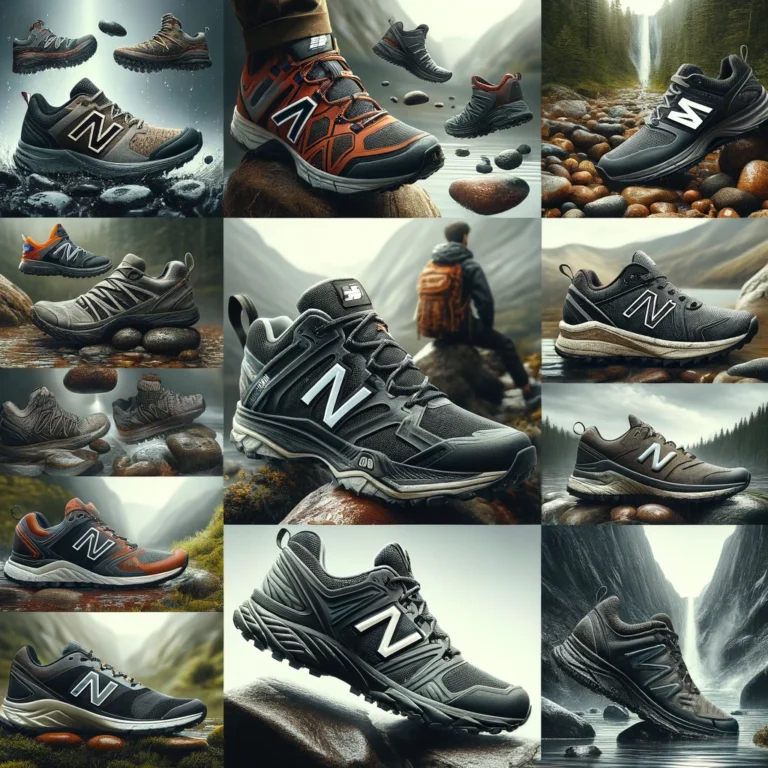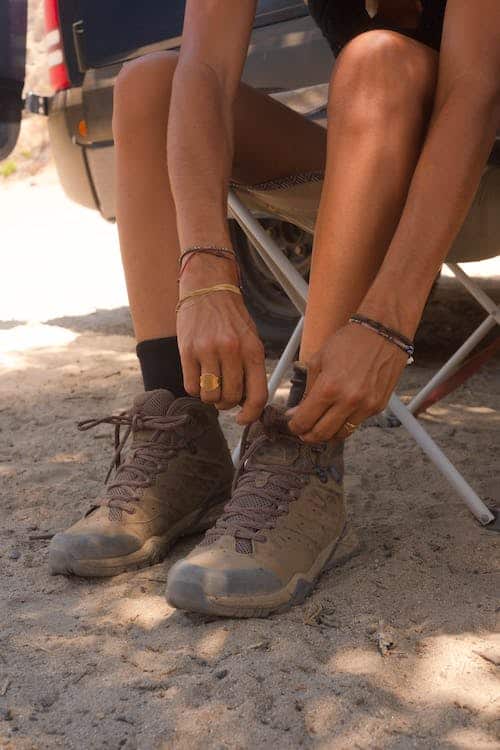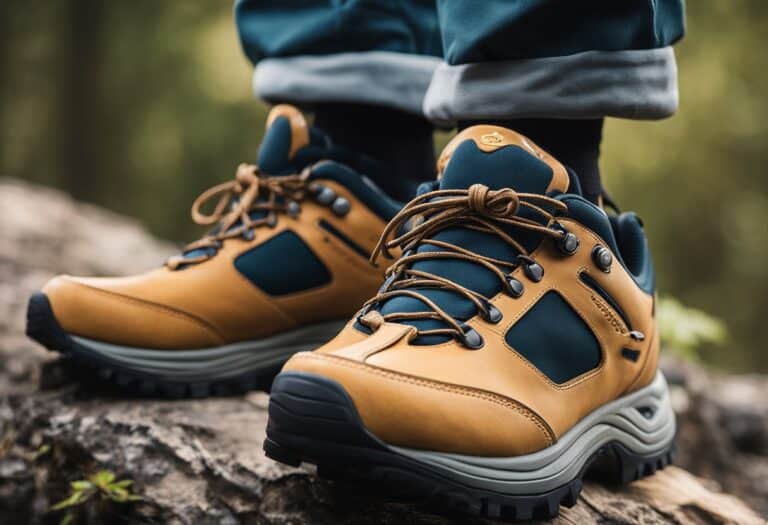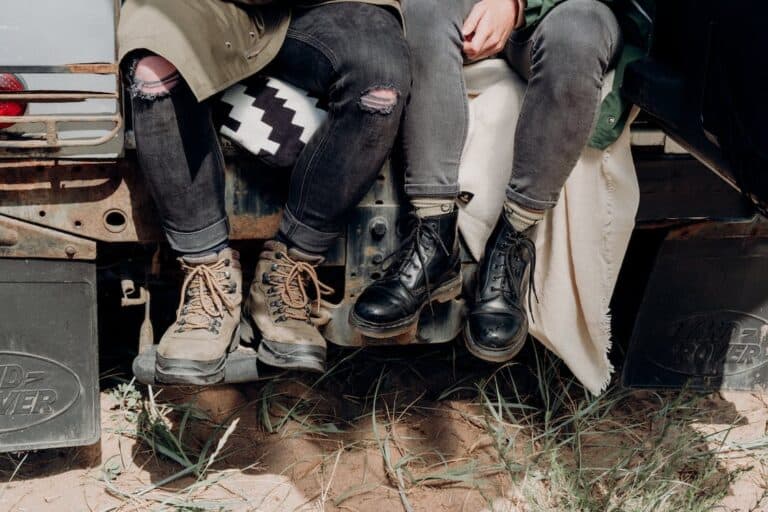Barefoot hiking shoes are a type of footwear that is designed to mimic the experience of walking barefoot while providing protection and support for the feet. These shoes are becoming increasingly popular among hikers who want to experience the benefits of barefoot walking without the risk of injury or discomfort.

One of the main benefits of barefoot hiking shoes is that they allow the feet to move and flex naturally, which can help to strengthen the muscles and improve overall foot health. They also provide a more tactile experience, allowing hikers to feel the ground beneath their feet and connect with nature in a more meaningful way. Additionally, barefoot hiking shoes are often lightweight and flexible, making them ideal for long hikes or backpacking trips.
When choosing barefoot hiking shoes, there are several key features to consider, such as the level of protection, the type of sole, and the fit. It is also important to transition slowly to barefoot hiking shoes to avoid injury and to take proper care of the shoes to ensure their longevity. By following these guidelines, hikers can enjoy the benefits of barefoot hiking while staying safe and comfortable on the trail.
Key Takeaways
- Barefoot hiking shoes mimic the experience of walking barefoot while providing protection and support for the feet.
- These shoes offer a more natural and tactile experience while improving foot health and are ideal for long hikes or backpacking trips.
- When choosing barefoot hiking shoes, it is important to consider key features, transition slowly, and take proper care of the shoes.
Benefits of Barefoot Hiking Shoes
When it comes to hiking, many people believe that supportive, protective hiking boots are the way to go. However, barefoot hiking shoes can provide a range of benefits that traditional hiking boots cannot.
Enhanced Natural Movement
Barefoot hiking shoes allow us to move more naturally, providing a greater range of motion in our feet and ankles. This increased mobility can help prevent injuries and improve our overall hiking experience. With barefoot hiking shoes, we can feel the terrain beneath our feet, which allows us to adjust our gait and balance accordingly.
Improved Ground Feedback
Barefoot hiking shoes provide better ground feedback, allowing us to feel the terrain beneath our feet. This can help us adjust our stride and balance, which can reduce the risk of injury. With traditional hiking boots, we may not be able to feel the terrain as well, which can increase the risk of slipping or tripping.
Strengthening Foot Muscles
Barefoot hiking shoes can help strengthen our foot muscles, which can improve our overall foot health. When we wear traditional hiking boots, our feet are often confined and restricted. With barefoot hiking shoes, our feet have more freedom to move, which can help improve our foot strength and flexibility.
Overall, barefoot hiking shoes can provide a range of benefits that traditional hiking boots cannot. By enhancing our natural movement, improving ground feedback, and strengthening our foot muscles, barefoot hiking shoes can help us enjoy a more comfortable and safe hiking experience.
Key Features to Consider
When it comes to selecting the perfect barefoot hiking shoe, there are a few key features that you need to consider. In this section, we will discuss the most important features that you should look for to ensure that you get the best possible hiking experience.
Toe Box Space
One of the most important things to consider when selecting a barefoot hiking shoe is the amount of space in the toe box. A wide toe box is essential for allowing your toes to spread out and grip the ground naturally. This not only provides better balance and stability but also improves overall foot health.
Sole Thickness
Another important feature to consider is the thickness of the sole. A good barefoot hiking shoe should have a thin sole that allows you to feel the ground beneath your feet. This provides better sensory feedback and allows you to adjust your footing and balance more easily. However, the sole should still be thick enough to provide protection against sharp rocks and other hazards on the trail.
Material and Durability
The material and durability of the shoe are also important factors to consider. A good barefoot hiking shoe should be made of high-quality materials that can withstand the rigors of the trail. Look for shoes made of durable materials such as leather or synthetic fabrics that are designed to last.
Fit and Comfort
Finally, the fit and comfort of the shoe are crucial. A good barefoot hiking shoe should fit snugly but not be too tight. It should also be comfortable to wear for long periods of time, with no rubbing or chafing. Look for shoes with a soft, breathable lining and a cushioned insole for added comfort.
Overall, when selecting a barefoot hiking shoe, it’s important to consider all of these factors to ensure that you get the best possible hiking experience. By paying attention to the toe box space, sole thickness, material and durability, fit and comfort, you can find the perfect shoe for your needs and enjoy all the benefits of barefoot hiking.
Popular Types of Barefoot Hiking Shoes

When it comes to barefoot hiking shoes, there are a few popular types that hikers tend to gravitate towards. In this section, we’ll explore some of these types and what makes them unique.
Trail Runners
Trail runners are a popular choice for hikers who want a lightweight and flexible shoe that still offers some protection and grip. These shoes are designed to be used on trails and other uneven terrain, so they often have a more aggressive tread pattern than other types of barefoot shoes.
One popular brand of trail runners is the Vibram FiveFingers KSO EVO, which features a minimalist design with a thin sole and individual toe pockets. This shoe offers excellent ground feel and allows for maximum flexibility and natural movement.
Minimalist Boots
For hikers who want a little more protection and support, minimalist boots are a great option. These boots offer a bit more coverage than trail runners, but still maintain a lightweight and flexible design.
One popular brand of minimalist boots is the Xero DayLite Hiker, which features a thin and flexible sole with a durable upper made from a breathable mesh material. This shoe offers excellent traction and protection while still allowing for natural movement and foot flexibility.
Water-Friendly Shoes
For hikers who plan on encountering water or wet conditions on their hike, water-friendly shoes are a must-have. These shoes are designed to dry quickly and offer excellent grip on wet surfaces.
One popular brand of water-friendly shoes is the Luna Sandals Mono Gordo, which features a thin and flexible sole with a durable and water-resistant upper made from a lightweight nylon material. This shoe offers excellent grip on wet surfaces and allows for natural foot movement and flexibility.
Overall, there are many different types of barefoot hiking shoes to choose from, each with its own unique features and benefits. By considering your specific needs and preferences, you can find the perfect pair of shoes to help you enjoy a comfortable and natural hiking experience.
Transitioning to Barefoot Hiking Shoes

When transitioning to barefoot hiking shoes, it’s important to understand that it’s a process that requires patience and dedication. Here are some tips to help make the transition smoother:
Adjustment Period
It’s important to give your feet time to adjust to the new shoes. Start with shorter hikes and gradually increase the distance over time. This will help your feet become accustomed to the new shoes and prevent injuries.
Training and Technique
Barefoot hiking shoes allow for a more natural and efficient gait, but it’s important to train your body to take advantage of this. Focus on keeping your weight centered over your feet and taking shorter strides. This will help reduce impact and improve your balance.
Listening to Your Body
As with any new physical activity, it’s important to listen to your body and adjust accordingly. If you experience any pain or discomfort, take a break and evaluate what might be causing it. It could be that you need to adjust your technique or simply take more time to adjust to the new shoes.
Remember, transitioning to barefoot hiking shoes is a process that requires patience and dedication. But with the right approach, it can lead to improved foot health, better balance, and a more enjoyable hiking experience.
Safety Tips for Barefoot Hiking
When it comes to barefoot hiking, safety should always be a top priority. Here are some tips to help you stay safe while enjoying the benefits of hiking barefoot.
Choosing the Right Terrain
Choosing the right terrain is key to staying safe while barefoot hiking. It is important to choose trails that are suitable for barefoot hiking and avoid trails with sharp rocks or other hazards that could cause injury. Keep in mind that different terrains will require different levels of foot protection. For example, if you plan to hike on rocky terrain, you may want to consider wearing minimalist shoes or toe socks to protect your feet.
Pacing and Breaks
Pacing yourself and taking breaks is important when barefoot hiking. It is essential to start slow and gradually increase the intensity and duration of your hikes. Taking frequent breaks can help prevent foot fatigue and reduce the risk of injury. It is also important to listen to your body and take breaks when you feel tired or need to rest.
Foot Protection Strategies
In addition to choosing the right terrain and pacing yourself, there are several foot protection strategies you can use to stay safe while barefoot hiking. Here are a few:
- Strengthen your feet: Building up the strength of your feet and ankles can help reduce the risk of injury. Consider doing exercises that target your feet and ankles, such as toe curls and heel raises.
- Use natural foot coverings: If you are hiking on rough terrain, consider using natural foot coverings such as leaves, grass, or pine needles to protect your feet.
- Bring backup footwear: It is always a good idea to bring backup footwear in case you need to switch to shoes or sandals during your hike.
By following these safety tips, you can enjoy the benefits of barefoot hiking while reducing the risk of injury.
Care and Maintenance of Barefoot Hiking Shoes

Taking care of your barefoot hiking shoes is essential to ensure they last long and perform well on your hikes. Here are some cleaning practices, storage tips, and suggestions for longevity and replacement.
Cleaning Practices
Cleaning your barefoot hiking shoes regularly is important to keep them in good condition. Use a soft-bristled brush to remove dirt and debris from the shoes after every hike. You can use a damp cloth to clean the shoes if there is more dirt, such as mud.
Avoid using harsh chemicals or soaps to clean your barefoot hiking shoes, as they can damage the shoes’ materials and affect their performance. Instead, use products made specifically for this purpose, such as NST Wash, a cleaning product for shoes made of Gore-Tex, fabric, suede, nubuck, or leather.
Storage Tips
Storing your barefoot hiking shoes properly is crucial to maintain their shape and prevent damage. After cleaning, stuff the shoes with newspapers or use shoe trees to help them retain their shape. Avoid drying them on heating or direct sunlight, as this can damage the shoes’ materials.
Store your barefoot hiking shoes in a cool and dry place, away from direct sunlight and moisture. Keep them in a shoe bag or box to protect them from dust and debris.
Longevity and Replacement
With proper care and maintenance, barefoot hiking shoes can last for several years. However, it is important to replace them when they show signs of wear and tear or when they no longer offer the necessary support and protection.
Inspect your barefoot hiking shoes regularly for signs of wear and tear, such as holes, cracks, or worn-out soles. If you notice any of these signs, it may be time to replace your shoes.
In conclusion, taking care of your barefoot hiking shoes is essential to ensure they last long and perform well on your hikes. By following these cleaning practices, storage tips, and suggestions for longevity and replacement, you can keep your barefoot hiking shoes in good condition and enjoy your hikes to the fullest.
Environmental Impact and Sustainability

Eco-Friendly Materials
When it comes to barefoot hiking shoes, choosing eco-friendly materials can make a big difference in reducing our environmental impact. Some sustainable materials used in barefoot hiking shoes include recycled plastic bottles, natural rubber, cork, and organic cotton.
Recycled plastic bottles are often used to create the uppers of barefoot hiking shoes, reducing the amount of plastic waste in landfills and oceans. Natural rubber, which is derived from the sap of rubber trees, is a renewable resource that can be sustainably harvested. Cork is another sustainable material that is often used in the insoles of barefoot hiking shoes, as it is lightweight and has natural antimicrobial properties. Organic cotton is also a popular choice for laces, as it is grown without the use of harmful pesticides and chemicals.
Brand Ethics and Practices
Aside from eco-friendly materials, it’s also important to consider the ethics and practices of the brands we choose to support. Look for brands that prioritize sustainability and ethical production processes, such as fair labor practices and responsible sourcing of materials.
Some brands also have specific initiatives in place to reduce their environmental impact, such as using renewable energy sources in their factories or implementing recycling programs for their products. By supporting these brands, we can make a positive impact on the environment and encourage others to do the same.
Overall, choosing eco-friendly materials and supporting sustainable brands can help reduce our environmental impact and promote a more sustainable future.
Frequently Asked Questions

What are the benefits of wearing barefoot hiking shoes?
Barefoot hiking shoes offer several benefits over traditional hiking shoes. They allow for a more natural gait and provide better ground feel, which can help improve balance and stability on uneven terrain. Barefoot hiking shoes also promote better posture and strengthen the muscles in the feet and lower legs. Additionally, they are typically lighter and more flexible than traditional hiking shoes, which can help reduce fatigue and improve overall comfort while hiking.
How do waterproof barefoot hiking shoes perform compared to regular hiking shoes?
Waterproof barefoot hiking shoes can perform just as well as regular hiking shoes in wet conditions. However, it’s important to note that some barefoot hiking shoes may not provide as much insulation as traditional hiking shoes, so they may not be suitable for extremely cold or snowy conditions.
What should I look for when choosing the best barefoot hiking shoes?
When choosing the best barefoot hiking shoes, there are several factors to consider. Look for shoes with a wide toe box that allows your toes to splay naturally, as well as a flexible sole that provides good ground feel. It’s also important to choose shoes with a comfortable and secure fit, and to consider the type of terrain you will be hiking on when selecting shoes with appropriate traction.
Are there any vegan options available for barefoot hiking shoes?
Yes, there are several brands that offer vegan options for barefoot hiking shoes. Look for shoes made with synthetic materials such as nylon or polyester, rather than leather or suede.
How do zero drop hiking shoes differ from traditional hiking footwear?
Zero drop hiking shoes have a sole that sits flat on the ground, with no difference in height between the heel and the toe. This design promotes a more natural gait and can help improve posture and reduce impact on the joints. Traditional hiking shoes typically have a higher heel, which can put more strain on the ankles and knees.
What are the potential drawbacks of hiking in barefoot shoes?
While barefoot hiking shoes offer many benefits, there are also some potential drawbacks to consider. Barefoot shoes provide less protection from sharp rocks and other hazards on the trail, and may not be suitable for extremely cold or wet conditions. Additionally, it can take some time to adjust to the unique feel of barefoot shoes, and some hikers may experience discomfort or soreness during the transition period.






